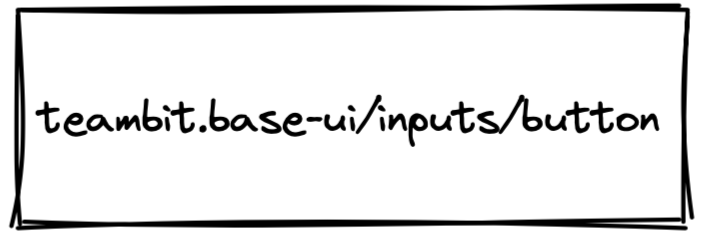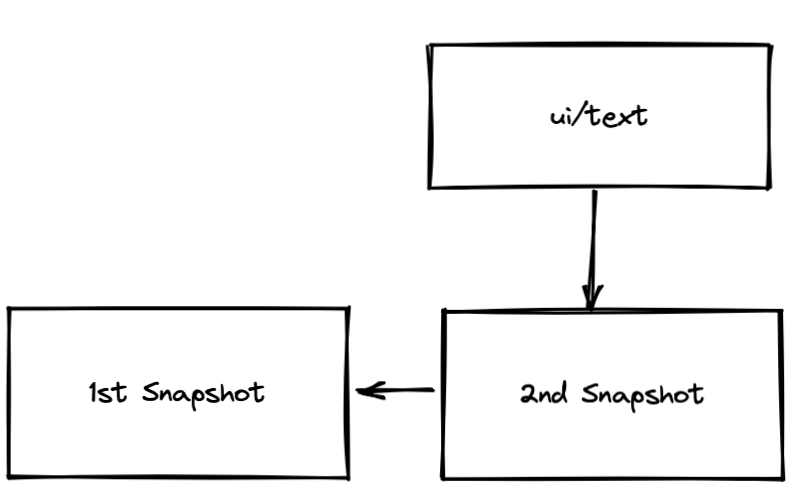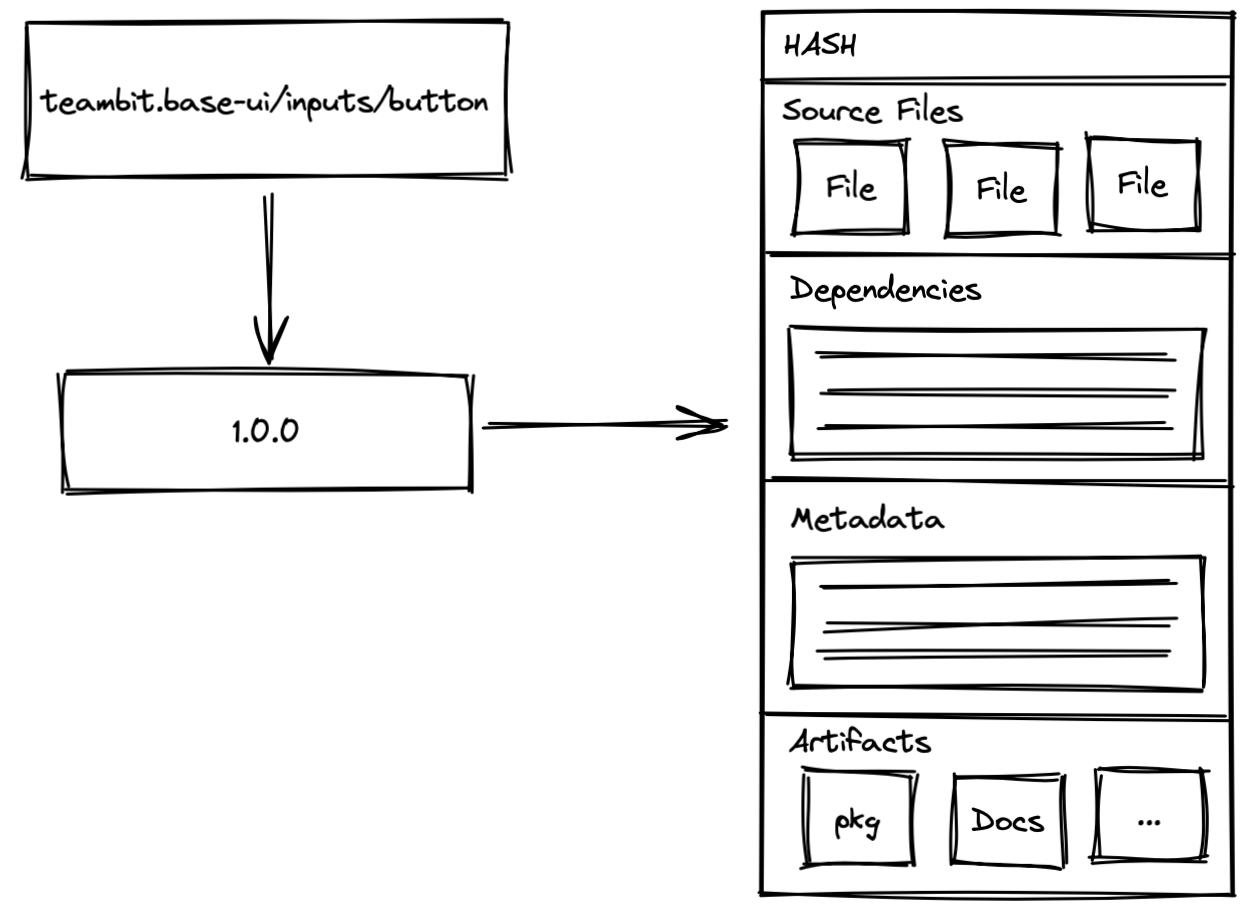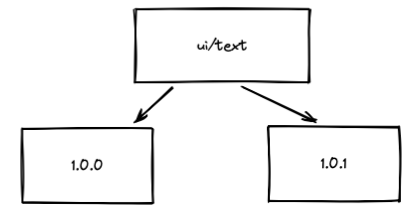Each component is stored in its own "mini" repository containing all information about a component.
When you add a new component, Bit adds it to the local workspace store found in .git/bit.

Alongside components, the workspace store holds states for components. These states are immutable and contains all information about a component at a specific point in time.
- Source code - as seen in your workspace.
- Configuration - as calculated from
workspace.jsonc. - Dependencies - as calculated from all
importstatements in the source code. - Metadata - like the version message, author, date of change, etc.
- Artifacts - as generated when running the component's build pipeline.

Each time you snapshot a change, Bit saves the state of the component, and points to it from the component.

As you keep on maintaining components and creating more snaps, Bit builds and maintains the revision history of the component.

- Latest snap will always be pointed by the component.
- A snap points to its predecessor.
Versions are essentially very unique snapshots that has a semantic version attached to them, when you create a new version for a component.

Components directly refer to all their available semantic versions. Version history and precedence is determined by semantic version, not when a tag was created.

Besides using snap and tag to write new versions for components, you can use checkout to pull a past (or future) state of a specific component from the store, keeping the rest of your workspace unchanged.
bit checkout 1.0.0 teambit.harmony/content/aspects-overview
Bit will switch the component to a past state from the component history.
successfully switched the following components to their latest version teambit.harmony/content/aspects-overview@1.0.0 updated aspect-graph.ts updated aspects-overview.composition.tsx updated aspects-overview.docs.mdx auto-merged aspects-overview.mdx updated composability.png updated index.ts
The process of import and export for components is all about sharing changes in component history with other developers. Each remote Bit scope is a storage server for components and their history, similar to the local component store.
Dependencies between versions or snaps are logged as part of the component's state.

This allows a safer workflow when working in a distributed environment, as when you export components all dependencies are ported over alongside the component.
For example, if you build a component in the billing system, and depending on components from the design system and when exporting the component to your scope, the scope will fetch all dependencies from design system and store them in it's storage.
Stored Dependencies are not visible through the UI, they are there for cases where you may not have access to the remote scope as it was taken down or removed.
When other developer then import the component from billing scope, the dependencies from design system will be fetched from the billing scope, and stored locally for the consumer's workspace.
Follow these steps to explore how components are stored and managed for your workspace.
Start by importing a component with a history of changes:
bit import teambit.base-ui/inputs/button
After the import process is complete, we can start exploring the component store:
bit cat-scope
During the import command, Bit fetched the button component and it's history. Moreover, see that all button's dependencies are fetched as well component-dependencies.
┌──────────────────────────────────────────────────┬───────────────────────────────────────────────┐ │ id │ Object │ ├──────────────────────────────────────────────────────────────────────────────────────────────────┤ │ teambit.base-react/buttons/button │ obj: e603d90cf7c889b7ab9a9726a17123a27a167b8f │ ├──────────────────────────────────────────────────┼───────────────────────────────────────────────┤ │ teambit.base-ui/elements/dots-loader │ obj: e8e067063f355d12be2af049d058f153abed7d41 │ ├──────────────────────────────────────────────────┼───────────────────────────────────────────────┤ │ teambit.documenter/ui/copy-box │ obj: e9c696fd745a6d28d8dff813986da1142e8801bb │ ├──────────────────────────────────────────────────┼───────────────────────────────────────────────┤ │ teambit.base-react/content/image │ obj: ed0b933b3f51b7c5403f5a75e41c67e3f453ea3b │ ├──────────────────────────────────────────────────┼───────────────────────────────────────────────┤ │ teambit.design/ui/external-link │ obj: ee077bbb362fe75f07fef024066d13dadad1ab07 │ ├──────────────────────────────────────────────────┼───────────────────────────────────────────────┤ │ teambit.base-ui/text/paragraph │ obj: f050ffae25607a81752cfbe7b0e96fe548376a24 │ ├──────────────────────────────────────────────────┼───────────────────────────────────────────────┤ │ teambit.documenter/theme/theme-context │ obj: f2eb682b13e32dfaf7a8c4b3132339f57526ae24 │ ├──────────────────────────────────────────────────┼───────────────────────────────────────────────┤ │ teambit.base-ui/routing/native-nav-link │ obj: f4e46c640c98521c7e08b7dbdcd6231250ded934 │ ├──────────────────────────────────────────────────┼───────────────────────────────────────────────┤ │ teambit.design/ui/buttons/button │ obj: f54cf2199ebea77aeff811b3d03c3b9f89e040ad │ └──────────────────────────────────────────────────┴───────────────────────────────────────────────┘
The above output table shows the mapping between each component ID and its component-object hash.
Let's explore teambit.base-ui/inputs/button:
bit cat-object -p e603d90cf7c889b7ab9a9726a17123a27a167b8f
Here we see all the data we have for the component.
{ "name": "buttons/button", "scope": "teambit.base-react", "versions": { // ... "1.8.21": "5d93b9c90096952038b3654417206fd27b485e28", "1.8.22": "40912fdea8a89cf24cbb87ec4bf25703442aa7d7", "1.8.23": "0fb0f2e884caa591e4a07e413e42fcf6b79f29ed", "1.8.24": "32479898826d2df2ad0e6845b408035dc24fc5d0", "1.8.25": "1b58b0b7c0a12c5f28fb852c2ba643a2ff47bbb7", "1.8.26": "79362d1cc55c0ea17524b0bdcfe5e35e91f2fb43" }, "lang": "javascript", "deprecated": false, "bindingPrefix": "@teambit", "remotes": [ { "url": "https://koykibc.scopes.bit.dev", "name": "teambit.base-react", "date": "1633356726283" } ], "schema": "1.0.0", "head": "79362d1cc55c0ea17524b0bdcfe5e35e91f2fb43" }
Using cat-object we can explore the contents of a specific object.
bit cat-object -p 79362d1cc55c0ea17524b0bdcfe5e35e91f2fb43
{ "files": [ { "file": "1e46108fa156694935ef2581b5fc0fba40596660", "relativePath": "button.composition.tsx", "name": "button.composition.tsx", "test": false }, //... ], "mainFile": "index.ts", "bindingPrefix": "@teambit", // ... ], "artifacts": [ ... ] // compiled output, package tar file, etc. }, // ... ], "aspectsData": [ // (data regarding the pkg, tester, etc...) ] }, "name": "teambit.pipelines/builder" } ], "packageDependencies": { // ... }, // ... "buildStatus": "succeed", "packageJsonChangedProps": {}, "parents": [ "1b58b0b7c0a12c5f28fb852c2ba643a2ff47bbb7" ] }
To examine the content of the button.compositions.ts file run:
bit cat-object -p 1e46108fa156694935ef2581b5fc0fba40596660
import React from 'react'; import { Button } from './button'; export const BasicButton = () => <Button>click me</Button>; export const ButtonWithAlert = () => ( <Button onPress={() => alert('hello there!')}>click me</Button> ); // ...
The below diagram shows the .bitmap file referencing to specific component versions to be used by the working directory.
